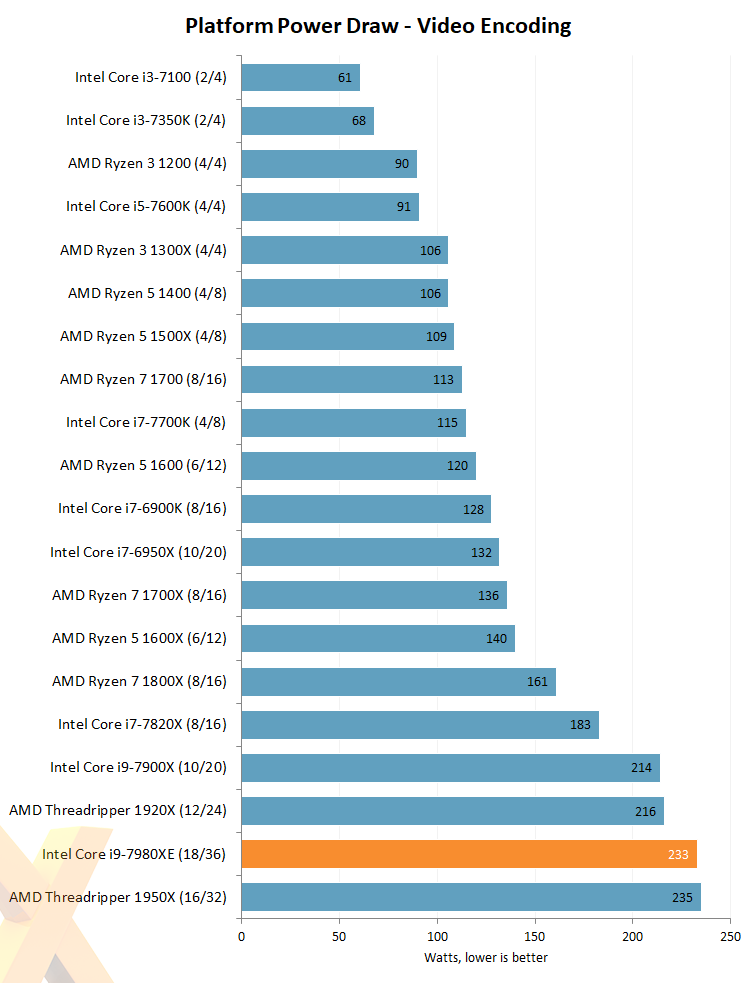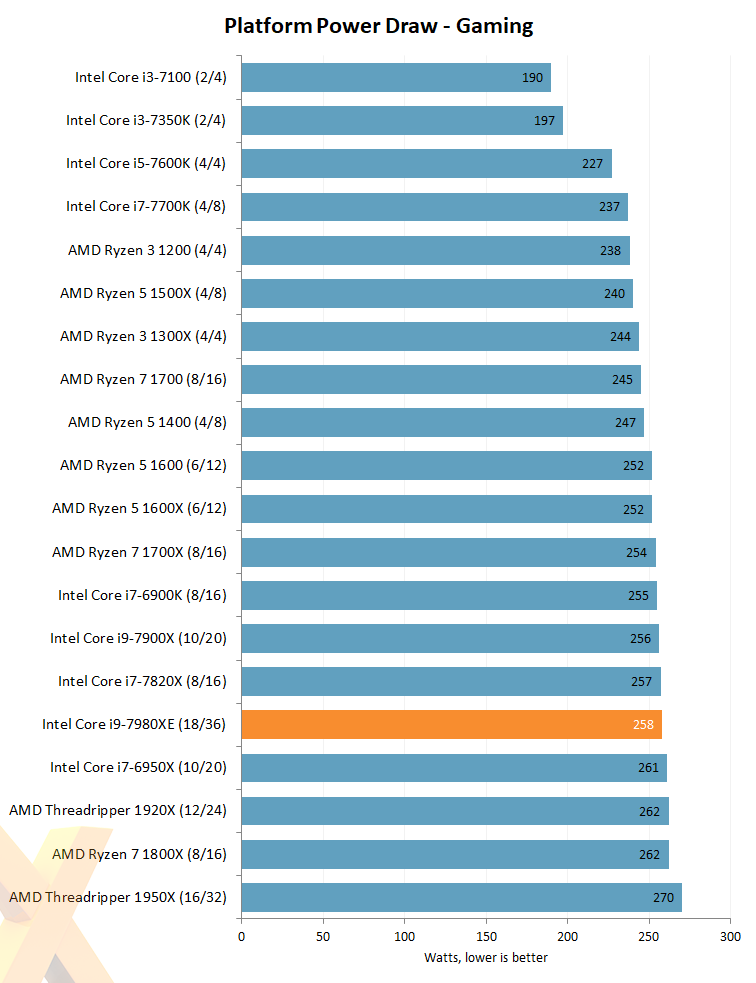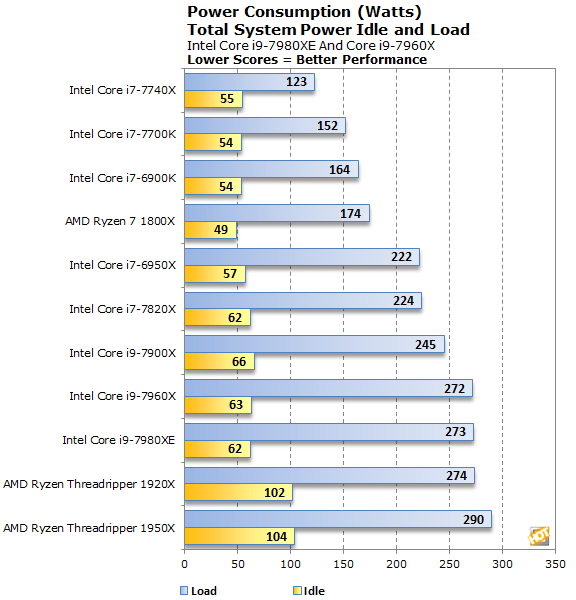8350rocks :
7980XE pulls over 500w by itself when overclocked:
http://www.pcgamer.com/intel-core-i9-7980xe-review-an-incredibly-fast-cpu-but-gamers-dont-need-it/
Intel is rumored to be working on a nuclear fission adapter to power their new chips, rumored price tag to be in the $1,000,000.00 USD range. Overclocking will void the warranty on both parts however...caveat emptor.
http://www.pcgamer.com/intel-core-i9-7980xe-review-an-incredibly-fast-cpu-but-gamers-dont-need-it/
Intel is rumored to be working on a nuclear fission adapter to power their new chips, rumored price tag to be in the $1,000,000.00 USD range. Overclocking will void the warranty on both parts however...caveat emptor.
(i) He is not measuring power at socket level, but power at platform level.
(ii) At stock settings the 7980XE pulls less power than TR 1950X, despite the ThreadRipper has two less cores and is much slower.
(iii) The 1950X hits a wall at around 3-9--4.0GHz. Using LN2 and pushing the chip at same clocks than OC XE, bring power consumption well above 500W. In fact already with a weak 3.9GHz overclock the 1950X platform pulls 550W. ThreadRipper is terribly inefficient and power hungry!












